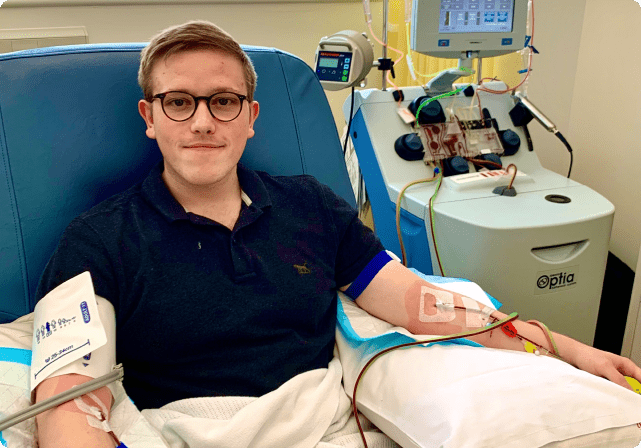Why stem cell transplants?
Understanding stem cell transplants
Blood stem cell transplants offer a critical, potentially life-saving treatment for patients with blood cancers and disorders, such as leukaemia. The procedure replaces malfunctioning stem cells with healthy cells from a donor, addressing the underlying causes of the illness.
For many patients, stem cell transplants represent their last hope for a cure and provide the best chance for long-term survival. These transplants are essential because they not only restore healthy blood cell production but also strengthen the immune system, allowing patients to better fight infections and recover from their illness.
Each year, thousands of Australians are diagnosed with blood cancers and disorders, with many requiring a stem cell transplant to survive.

Conditions treated by stem cell transplants
Blood stem cell transplants are used to treat a variety of conditions, including:
Blood cancers:
- Chronic myeloid leukaemia
- Chronic lymphocytic leukaemia
- Acute leukaemia
- Myelodysplasia
- Myeloproliferative disease
- Multiple myeloma
- Hodgkin lymphoma
- Non-Hodgkin lymphoma
- Lymphoproliferative disorders
Blood disorders:
- Severe aplastic anaemia
- Paroxysmal nocturnal haemoglobinuria
- Immunodeficiency diseases
- Fanconi’s anaemia
- Inherited metabolic disorders
- Marrow failure syndromes
- Pure red cell aplasia
- Blackfan-Diamond syndrome
- Congenital dyserythropoietic anaemia
- Severe inherited platelet function disorder
- Thalassaemia major
- Sickle cell disease
How stem cell transplants cure patients
Stem cell transplants offer a crucial treatment for patients with blood cancers and disorders by replacing malfunctioning stem cells with healthy ones from a compatible donor. When infused into the patient’s bloodstream, these healthy stem cells migrate to the bone marrow, where they engraft and begin producing normal blood cells. This process restores healthy red and white blood cell levels, essential for oxygen transport and immune function.
By targeting the underlying disease—replacing cancerous stem cells with healthy ones—transplants can significantly reduce the risk of relapse. The result is not only a potential cure but also improved long-term health outcomes, allowing patients to regain their quality of life.
Why ethnicity matters for the transplant
Finding a compatible stem cell donor is often challenging because successful transplants depend on matching a patient’s human leukocyte antigen (HLA) markers with those of the donor. HLA markers are inherited, meaning patients are more likely to find a match within their own ethnic or genetic background.
Australia’s diverse population means we need more donors from all ethnic groups to increase the likelihood of finding suitable matches for every patient. Certain minority communities, including First Nations Peoples, Pasifika, and those of Asian or Middle Eastern descent, are underrepresented in the donor registry. This lack of diversity means that patients from these backgrounds have fewer options and are less likely to find a matching donor.
By joining the donor registry, particularly if you are from an underrepresented ethnic group, you help bridge this gap and offer a lifeline to patients from diverse backgrounds who are in urgent need of a stem cell transplant.